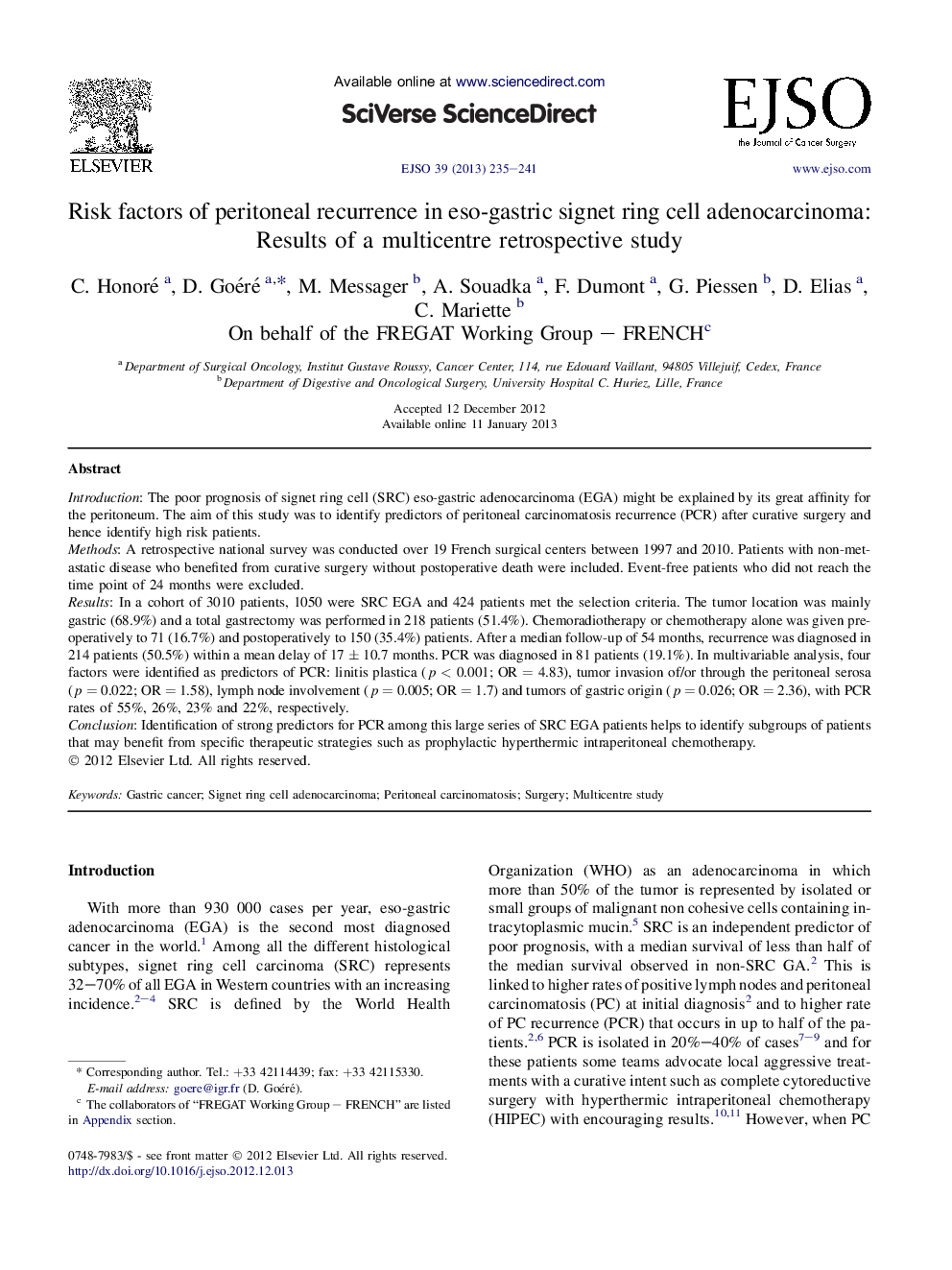| Article ID | Journal | Published Year | Pages | File Type |
|---|---|---|---|---|
| 3985639 | European Journal of Surgical Oncology (EJSO) | 2013 | 7 Pages |
IntroductionThe poor prognosis of signet ring cell (SRC) eso-gastric adenocarcinoma (EGA) might be explained by its great affinity for the peritoneum. The aim of this study was to identify predictors of peritoneal carcinomatosis recurrence (PCR) after curative surgery and hence identify high risk patients.MethodsA retrospective national survey was conducted over 19 French surgical centers between 1997 and 2010. Patients with non-metastatic disease who benefited from curative surgery without postoperative death were included. Event-free patients who did not reach the time point of 24 months were excluded.ResultsIn a cohort of 3010 patients, 1050 were SRC EGA and 424 patients met the selection criteria. The tumor location was mainly gastric (68.9%) and a total gastrectomy was performed in 218 patients (51.4%). Chemoradiotherapy or chemotherapy alone was given preoperatively to 71 (16.7%) and postoperatively to 150 (35.4%) patients. After a median follow-up of 54 months, recurrence was diagnosed in 214 patients (50.5%) within a mean delay of 17 ± 10.7 months. PCR was diagnosed in 81 patients (19.1%). In multivariable analysis, four factors were identified as predictors of PCR: linitis plastica (p < 0.001; OR = 4.83), tumor invasion of/or through the peritoneal serosa (p = 0.022; OR = 1.58), lymph node involvement (p = 0.005; OR = 1.7) and tumors of gastric origin (p = 0.026; OR = 2.36), with PCR rates of 55%, 26%, 23% and 22%, respectively.ConclusionIdentification of strong predictors for PCR among this large series of SRC EGA patients helps to identify subgroups of patients that may benefit from specific therapeutic strategies such as prophylactic hyperthermic intraperitoneal chemotherapy.
